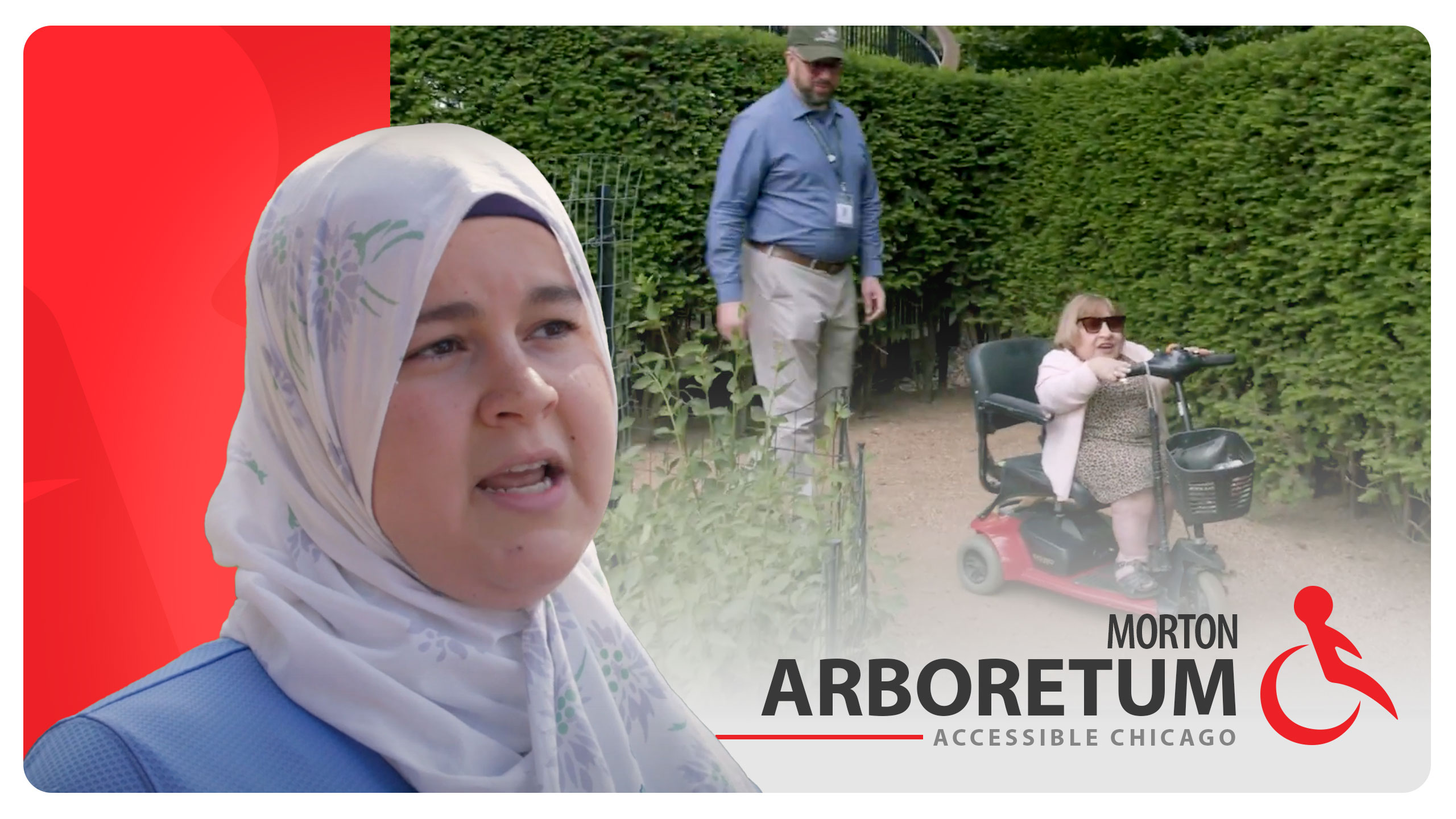
Immerse yourself in the serene beauty of Morton Arboretum, nestled in Lisle, Illinois, just 25 miles west of Chicago. The Arboretum strives to create a welcoming space for all. Join Tekki as she explores the accessible wonders of the arboretum, marveling at the lush plant species and beautiful exhibits. Discover how Mariam Murphy, the Youth and Family Programs Inclusion Coordinator, ensures that the Children’s Garden is fully accessible, with paved pathways, accessible ramps, and sensory backpacks available for a truly inclusive experience.
Click to View ASL Transcript
(bright music)
AARÓN: We’re here at the Morton Arboretum in Lisle, Illinois about 25 miles west ofChicago. We are an Arboretum, which means we have more than 25 species of trees on site, many different plant species as well with 1,700 acres, which there’s a lot happening here beyond just being trees. I’m Aarón Siebert-Llera. I’m the Director of Inclusion. Nature’s for everybody. We want to create a space where everybody feels welcome, everybody feels they can come and have a a great experience. Having a love for nature is something that you really can only experience by being in nature. There are many accessible areas of theArboretum that people can take part in.
TEKKI: Hi.
AARÓN: Hi. Good morning.
TEKKI: Good morning. I’m Tekki.
AARÓN: Hi, Tekki. I’m Aarón. It’s wonderful tomeet you. Welcome to Morton Arboretum.
TEKKI Thank you.
(clicks button)
TEKKI: I live in the city, so it’s fabulous to be out here in nature. I was very nervous coming to this venue. I was told that it was accessible. It was really nice to come and see that I could get places by myself. The statues and exhibits are beautiful.
AARÓN: As you notice to your right, you see the signage so you know what types of plants are here.
TEKKI: And I love how there are little signs telling me what the different plants are.
MARIAM: One of the focuses that we have been maintaining is limiting barriers to access. My name is Mariam Murphy and I am the Youth and Family Programs Inclusion Coordinator. In the Children’s Garden, the whole area is paved. We have accessible ramps that go to every space in the Garden. We have tree houses that have boardwalks. Again, you can get closer to the water here and even right outside the Children’s Garden itself, there is a trail that covers the perimeter of the Garden that is fully paved.
TEKKI: I was so excited to hear that the tram was accessible. I got a chance to get on and it seemed very, very safe. It goes all over the Arboretum.
AARÓN: Really, our goal is to try to create more accessible experiences. There’s the ADA, which is theAmerican Disabilities Act, which is really a the legal standard, but we’re trying to be above that. We’re trying to listen and hear from many different people as far as being able to have informed decisions made as far as how we can become more accessible.
MARIAM: We want to be able to connect with community partners and individuals who may have not seen this as a space for them in the past, to know that nature is for everyone and the interconnected relationship that we all have and that it is important for them to be here as well. We work with individuals who are deaf-blind individuals who have sensory processing differences. So one thing that we have developed are sensory backpacks that you are able to check out. They’re here in the Children’s Garden, but also at our visitor’s center, and so what it has is a variety of supports that could help anyone enjoy their time here at the Arboretum.
TEKKI: All of the accessibility makes me feel welcome as a guest. If you need special accommodations, no problem. I would describe this place as kind of heaven on Earth, filled with living beauty, smells of fresh trees and plants. Come here. Enjoy. Just be in nature. Even go to the library and sit there. Take in all of the art that’s here. There’s places to go trails, all new things to discover.

Recent Comments